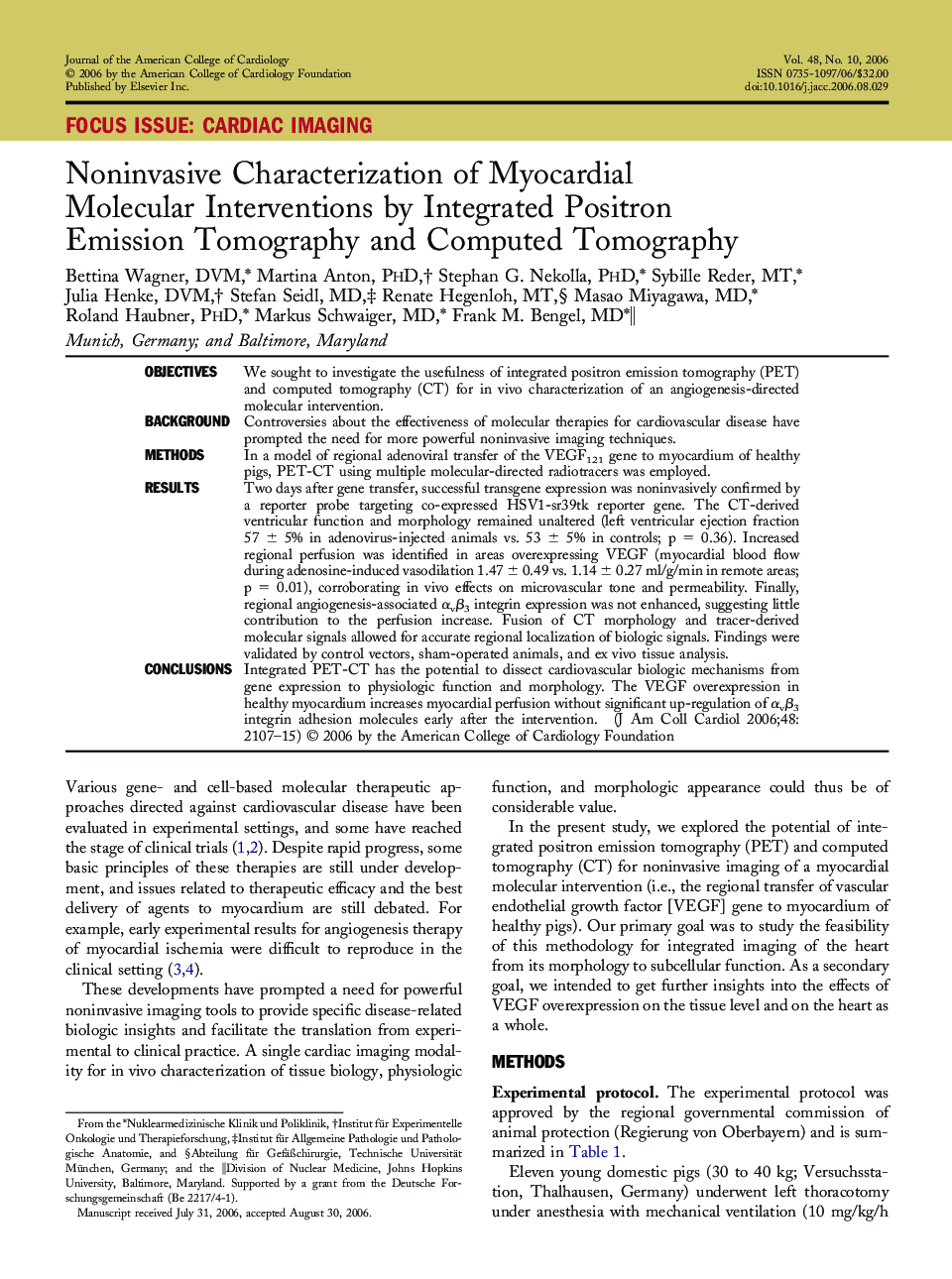| کد مقاله | کد نشریه | سال انتشار | مقاله انگلیسی | نسخه تمام متن |
|---|---|---|---|---|
| 2953747 | 1577498 | 2006 | 9 صفحه PDF | دانلود رایگان |

ObjectivesWe sought to investigate the usefulness of integrated positron emission tomography (PET) and computed tomography (CT) for in vivo characterization of an angiogenesis-directed molecular intervention.BackgroundControversies about the effectiveness of molecular therapies for cardiovascular disease have prompted the need for more powerful noninvasive imaging techniques.MethodsIn a model of regional adenoviral transfer of the VEGF121gene to myocardium of healthy pigs, PET-CT using multiple molecular-directed radiotracers was employed.ResultsTwo days after gene transfer, successful transgene expression was noninvasively confirmed by a reporter probe targeting co-expressed HSV1-sr39tk reporter gene. The CT-derived ventricular function and morphology remained unaltered (left ventricular ejection fraction 57 ± 5% in adenovirus-injected animals vs. 53 ± 5% in controls; p = 0.36). Increased regional perfusion was identified in areas overexpressing VEGF (myocardial blood flow during adenosine-induced vasodilation 1.47 ± 0.49 vs. 1.14 ± 0.27 ml/g/min in remote areas; p = 0.01), corroborating in vivo effects on microvascular tone and permeability. Finally, regional angiogenesis-associated αvβ3integrin expression was not enhanced, suggesting little contribution to the perfusion increase. Fusion of CT morphology and tracer-derived molecular signals allowed for accurate regional localization of biologic signals. Findings were validated by control vectors, sham-operated animals, and ex vivo tissue analysis.ConclusionsIntegrated PET-CT has the potential to dissect cardiovascular biologic mechanisms from gene expression to physiologic function and morphology. The VEGF overexpression in healthy myocardium increases myocardial perfusion without significant up-regulation of αvβ3integrin adhesion molecules early after the intervention.
Journal: Journal of the American College of Cardiology - Volume 48, Issue 10, 21 November 2006, Pages 2107–2115